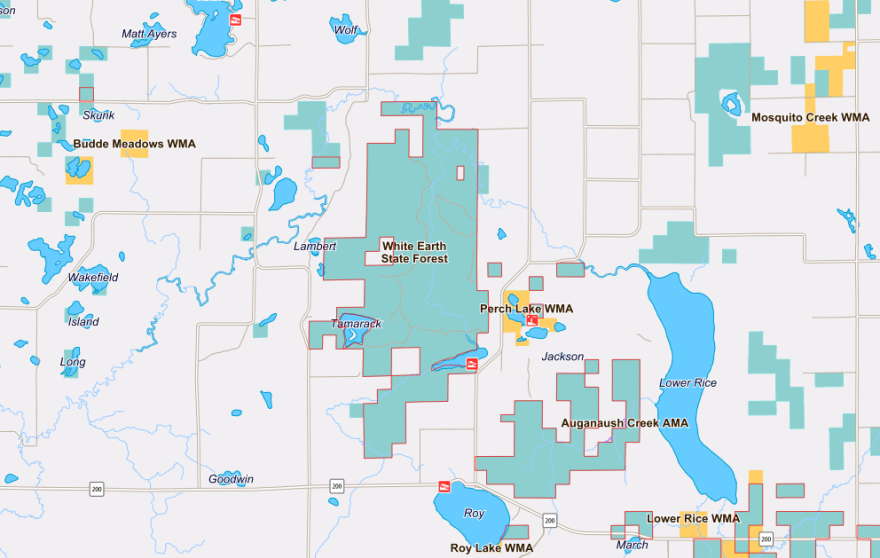ST. PAUL — After more than an hour of passionate testimony on the proposed transfer of state-managed lands in the White Earth State Forest to the White Earth tribal nation, a Senate committee tabled the bill.

Sen. Mary Kunesh, DFL-New Brighton, introduced the measure, and during the Thursday, March 7, Senate Climate, Environment and Legacy Committee meeting, she included a new amendment that specified all transferred land will remain open to all recreational activities by both tribal and non-tribal citizens.
Band leadership separately made this commitment in a news release, and Tribal Chairman Michael Fairbanks reiterated this in his own testimony.
"We're here to open our doors to everyone, to respect [the forest] for not my grandchildren, but also your grandchildren,” Fairbanks said.
“If they sell those parcels off sometime in the future, guess what goes up? ‘Do not enter.’ ‘No trespassing.’ You cannot come back. You can't go on this land no more. These are things that we're trying to prevent.”
Kunesh described the history of the White Earth State Forest and its relationship to the White Earth Nation. The forest's creation in 1933 was made possible due to allotment-era policies of the late 19th and early 20th centuries, where allotments “checkerboarded” tribal lands, leaving “available” lands free to be sold off.

"Basically, the state government took those lands and created a state forest out of it. Why, might you ask? Well, there's timber on those lands,” Kunesh said.
To this day, timber within state-managed forests is available for logging through a permitted process. Proceeds from the cord sales benefit local government units, especially schools.
Representatives from the timber industry voiced their opposition to the bill.
“The timber harvested is used by several mills in the area, producing home construction materials, including the West Fraser OSB-mill in Solway, as well as several smaller mills that produce dimensional lumber,” said Ray Higgins, Minnesota Timber Producers Association president.
“The land transfer would strike a damaging blow to these small, family-owned businesses that are the backbone of the economies of Becker, Clearwater, Mahnomen and other counties in that part of the state.”
“Were the transfer to go through, there would be less logging activity, less materials available for our mills,” said Rick Horton, Minnesota Forest Industries vice president. “We exist in a global economy, and the forest products industry runs on very tight margins. We need an abundance of raw materials sustainably gathered to compete in this arena.”
Department of Natural Resources Assistant Commissioner Bob Meier also testified, noting a task force created by the bill would facilitate the transfer over a five-year period, which he said would be a complex effort.
In response to Republican Sen. Justin Eichorn of Grand Rapids’ comments about the Upper Sioux land transfer last year catching him and other members of his caucus by surprise, Meier said the two transfers are incomparable.

"There were some terrible travesties that occurred on those lands, and we should not have had recreational opportunities taking place there,” Meier said of the Upper Sioux transfer. “This is different."
Republican Sen. Steve Green of Fosston represents the area around the White Earth State Forest and is a White Earth Band member. He voiced his concern about the community not learning about the transfer proposal until last week.
"It's not just division between communities, it's division within our families,” Green said.
“This is wrong, and if this was going to move forward, these meetings should have been held long ago. The people of the district should have known it and had a chance to speak.”
The bill still has a companion in the state House, where it was referred to the House Committee on Environment and Natural Resources Finance and Policy.
The Minnesota Legislature’s first committee deadline is March 22, where the committees must act favorably before a bill can move forward.
Dustin Roy, White Earth’s natural resources director, spoke in favor of the transfer, with the mind to keep the lands open for everyone.

“Look how big it was back [in 1933],” said Roy, referencing the maps shown to committee members. “There have been big transitions throughout the years. ... We’re all about public use of the land, and it’s no question that it’s dwindling. It’s getting sold off and then nobody can access it, and that’s not what we want.”
Roy has a personal connection to the area and said he is working with the band to keep the forest open to all.
“There's no better day than a day spent in these woods. This was my backyard growing up,” Roy said as his voice broke with emotion. "Why wouldn't we want everybody to enjoy this? That's what we're here for.”







